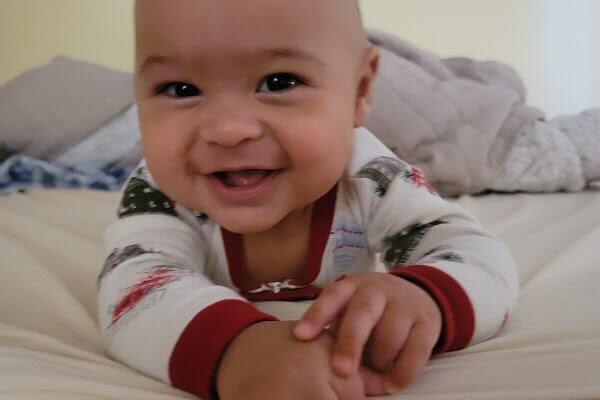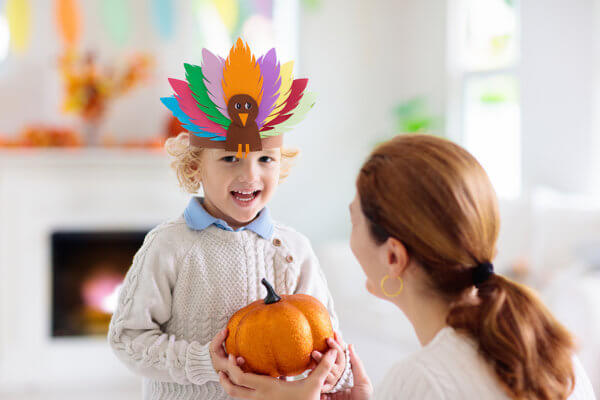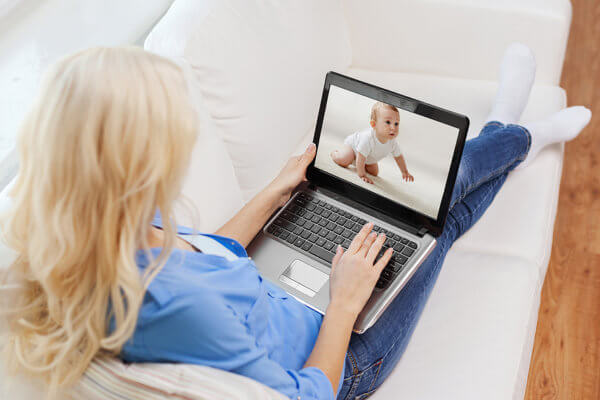
By Mary Jane Horton
Those who contemplate the beauty of the earth find reserves of strength that will endure as long as life lasts. -Rachel Carson
Parents today have a huge job to undertake: Not only do they love their children, keep them safe, feed them, clothe them and educate them, but they need to teach them to be protectors of the environment for their children and generations to come. Herewith, some ways that you can help your child do just that.
Start out right
The best time to set up a toxic-free, earth-friendly home environment is before your baby is born. Being “green” is not just about using nontoxic items in your home-those with low or no VOCs (volatile organic compounds), PVC (polyvinyl chloride) and phalates (a toxic chemical in flooring, plastic containers and personal care products)-but also about “sustainability,” meaning that whatever we use now should not compromise the earth for future generations.
“For the nursery, it’s best to paint at least a month before the baby is born and to use paints with no or low VOCs,” says Christopher Gavigan, CEO of Healthy Child Healthy World, a Los Angeles-based nonprofit organization dedicated to protecting children’s environmental health. VOCs keep the paint liquidy in the can and help it dry on the wall; some are known to cause cancer, others can cause damage to organs. “Better yet,” Gavigan adds, “think of not doing things-not painting, not ripping up floors, not installing blinds.” If you must work on the nursery after your baby is born, be sure to air out the room before your baby sleeps in it-with windows open and fans blowing until there is no noticeable smell.
Milk paints-which are odorless and made from milk protein (casein) and earth pigments such as lime and clay-make the least offensive kinds of paints. For flooring, hard surfaces are best, according to Gavigan. Finally, vacuum the baby’s room well and often, using a vacuum with a HEPA (high efficiency particulate air) filter, which traps large amounts of very small particles, unlike vacuums with other kinds of filters.
Many experts agree that if you’re going to make one major green investment, it should be in an organic crib mattress. Choose one made from clean, safe, certified cotton and organic wool, and which doesn’t contain PVC, the surface material used in nearly all baby mattresses. To make the purchase of an organic crib mattress more cost-effective in the long run, get a crib that can be made into a toddler bed.
Beyond the nursery
“In terms of the baby and the environment, it’s important to think about what goes in, around and on your new baby,” says Gavigan. In terms of in, breastfeeding for a year is best, if possible. To make your breast milk as healthy as possible, eat natural, organic and unprocessed foods-whenever possible-and avoid harmful chemicals and growth hormones, sugars, colors and artificial sweeteners. For moms who can’t, or choose not to, breastfeed, there are organic formulas available (see “Resources, page TK). Other caveats: Opt for glass baby bottles instead of plastic or check for BPA-free plastic bottles; choose silicon nipples for bottles rather than latex; and make sure soft plastic toys and teethers don’t contain phthalates or PVC.
When it comes to baby care products-what goes on your baby-keep it simple. According to Gavigan, babies don’t need creams or powders, and for diaper cleaning, water and a cotton square work fine. Go easy on your own personal care products as well: Babies can absorb the chemicals in them through their skin when close to an adult’s skin.
NEXT: LEAD BY EXAMPLE
{pagebreak}
Do the right thing
Babies learn everything they know by observing the modeling of their parents, their older siblings and other people in their world. Now that you’ve laid the foundation for your baby to have the best environment possible, start laying the bricks as your child grows up.
“Make [being green] a part of your life from the time your baby is born,” says Wendy Gordon, who founded Mothers & Others for a Livable Planet, a consumer outreach organization, in 1989, and Green Guide, a resource for the eco-conscious consumer, and is currently a consultant at the National Resource Development Council. “It should be like second nature. Bike with your child, walk, get outside-the world around us is a natural teaching environment, even if you live in a big city with high buildings. Being green is also about the little things: turning off a light, turning off the water, not being wasteful. It’s definitely a mind-set.”
Alan Greene, MD, pediatrician and author of Raising Baby Green (Jossey-Bass, 2007) and Feeding Baby Green (Jossey-Bass, 2009), agrees: “Kids learn by what you do. When you turn off a light, say, ‘We turn off the lights when we don’t need them,’ and the same thing with water. Make conservation part of their lives. And get them outside!”
This is a tact that all experts agree on: The more you show your baby-and then your toddler-the wide world around him, the more likely he’ll want to protect it.
You are what you eat
“We’re so disconnected from nature,” says Greene. “The new statistic is that kids spend 93 percent of their time inside. But you can take even the youngest baby outside-to a farmers’ market, to a farm-to see where her food comes from.” When your child is older, take her shopping and talk about organic meat or milk from grass-fed cows. “Use shopping as a teaching opportunity,” says Gordon.
Another way to teach your child about food and plants from early on is to keep your baby alongside you when you work in the garden. “Even if you don’t have a garden at home, you can take your child to the community garden,” says Catherine Karr, MD, PhD, director of the Pediatric Environmental Health Specialty Unit at the University of Washington in Seattle and a member of the American Academy of Pediatrics Committee on Environmental Health. “When they’re babies, just watching you-and then when they get older, helping you and digging in the dirt-is great for them,” she says. “Kids love the science of planting a seed and watching something grow, picking strawberries and tomatoes and popping them into their mouths.”
“When they’re between 1 and 2 years old is when their lifelong tastes are set,” Greene says. “And this is when to teach them about fruits, vegetables, whole grains and locally grown food. Age 4 to 5 is also a great time to give them a small garden plot of their own-even a planter box on a patio.” This close relationship to food will help to make your child a less picky eater, according to Greene: “It really helps when they grow food themselves.”
And then there are worms! “A great thing to do with kids is to create a compost and a worm bin. What toddler wouldn’t want a worm bin in his kitchen or outside?” asks Gordon. “And then you can teach your child about how the worms make the soil better. Kids care about what goes on around them-especially when they can make connections.”
And those caring feelings can expand. “All kids care about animals,” says Greene. “When you tell them that polar bears don’t have enough ice and that dolphins have antibacterial soap in their blood-details like that-it makes them want to protect the environment.”
Toys…Not!
Since some plastic toys come with health risks, experts suggest finding natural items instead. Having some man-made toys is inevitable, but having lots of toys is unnecessary. “For young babies-about 6 months-make a treasure basket,” says Greene. “You can put in a lemon, a wooden spoon, brightly colored material. They love the smells and the colors. For a 2-year-old, have her sort items in ice cube trays-beans, sea shells, etc.”
“We live in a high-tech, toy-crazy world,” adds Gordon. “We, as parents, should teach kids to play without television, computers and other high-tech toys-drawing pictures [on recycled computer paper], making projects from scrap, learning to sew and knit, playing with costumes. Kids can make a whole game from a pair of goggles. The idea isn’t to deny kids other toys, but to find great alternatives.” For a sleuthing game, Greene has this tip (for kids 3 and older): “Use the recycling symbols on plastic containers to help kids learn which plastics are okay and which ones are not. They love being little detectives-3 is not good, 4 is not good, 5 is good, 6 is not, 7 probably isn’t and so on.”
There is even a trend among parents to rethink the birthday present. “Donations for kids’ birthday parties are happening,” says Karr. “People of means are helping out because they realize their kids don’t need more stuff.” In that vein, Karr also notes that experiential presents-a play, museum, spending time with kids-have gotten more popular.
Legwork
It’s unanimous among experts that the best “green” activity is to get your child outside-and especially with his own locomotion when he is old enough. Before that, get your baby in the habit of being outside-either in a stroller, a front carrier or a backpack-even in the winter. Just dress both of you warmly. “When your child is old enough, bike to a play date,” says Gordon. “Get out of the mind-set that it’s dangerous.” Karr agrees: “It’s really important to be a role model for your kids. As much as you can, ride bikes, walk, use public transportation. It’s more fun than being in a car.”
Making your kids environmentally conscious isn’t just about the outside world; it’s an engaging way to be with your children and learn together. And just when you think you’ve taught your child well, he’ll go to preschool or kindergarten and begin teaching you about the environment.
NEXT: GO GREEN WITH THESE HELPFUL ONLINE RESOURCES
{pagebreak}
Resources
airnow.gov
Here you’ll find a guide to air quality indexes nationwide.
cosmeticdatabase.org
This site lists what specific products contain.
epa.gov
The Environmental Protection Agency’s Web site has information on lead and other metals, smoking, traffic, mold and moisture, VOCs, personal care products and local drinking water.
At epa.gov/kids, you’ll find art and outside activities related to the environment, plants and animals, recycling and more.
thegreenguide.com
This Web site has a great section on kids from infancy to college age.
greenpeace.org
The focus of this site is on environmental change in the oceans and on land.
kidsforsavingearth.com
This kid-friendly site provides environmental education for all ages.
nrdc.org/greenliving
Discover eco-conscious family tips here on everything from eliminating toxic chemicals from your house to buying tissue paper.
Toys
The most important thing to remember about toys is to avoid plastics that contain phthalates or PVC. Additionally, toys painted with bright colors, mostly imported from other countries, can contain lead (remember the toys-from-China scare?). For the most environmentally friendly toys, try these Web sites:
kenanausa.com
oompa.com
playstoretoys.com
treeblocks.com
Clothing
Whenever possible, buy organic cotton and wool, and natural fibers such as bamboo. Wash everything in a nontoxic detergent before you put it on your baby. Better yet, an environmentally friendly and cost-conscious way to obtain clothes is from friends’ kids (hand-me-downs usually come with great stories, too) or at secondhand stores.
Food
A basic rule: Any ingredient you can’t pronounce has no place in your child. Buy organic fruits and vegetables as much as possible and wash all produce well. The best place to buy is at farmers’ markets, where you can talk to the growers. As your baby gets older and eats adult food, avoid added thickeners, salts, sugars, starch and chemicals. This is easy if you eat mostly unprocessed foods. These Web sites offer organic or sustainable formula, baby foods and more:
cleanfish.com
happybabyfood.com
naturesone.com
plumorganics.com
wildplanetfoods.com
Mary Jane Horton is a writer and editor in Pasadena, Calif., whose two teenagers have taught her everything she knows about being green.
Whether you’re expecting your first or have tots at home, learn how to raise a green family with these tips.



